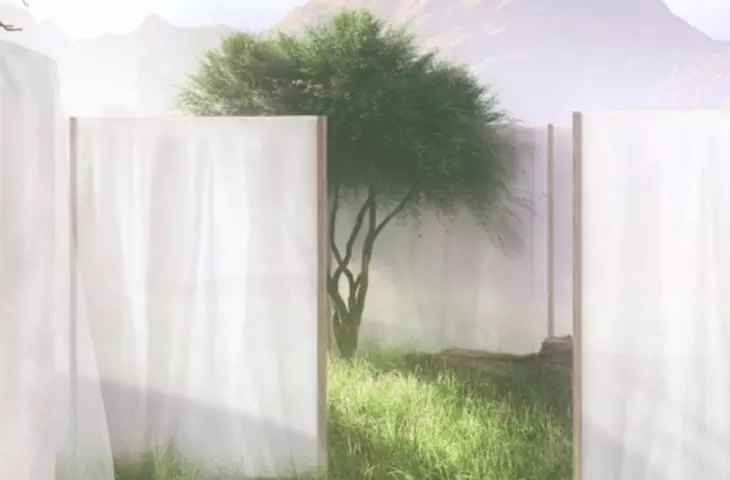How can architecture affect emotions? Can it influence moods through simple means? This topic was taken up by two students of the Silesian University of Technology - Julia Więckowska and Patrycja Iskra. The project "Emotional Maze" was honored with inclusion in the short list of the international competition.
"Museum of Emotions", organized by the Buildner platform, is a competition that aimed to design two independent spaces in which to experience positive and negative emotions. An important element was the impossibility of attaching an author's description - the language used by the artists and creators was only illustrations, graphics and diagrams. The work of the students from Silesia was highlighted by inclusion in the shortlist.
projection
© Julia Więckowska and Patrycja Iskra
between the walls of the labyrinth
In their work, Julia Więckowska and Patrycja Iskra referred to the idea of a labyrinth, which is meant to refer to the complicated nature of human emotions. The labyrinth is meant to be a metaphor for finding oneself in one's own emotions, an attempt to grapple with the sense of complexity of the overwhelming amount of information in today's world. The starting point was also how often we get lost in understanding our own emotions. How was the layout of the complex laid out? It was divided into two parts - referring to negative and positive emotions.
The first part of the maze refers to negative emotions - stress, fear or anxiety
© Julia Więckowska and Patrycja Iskra
going through the worst
The first part of the maze refers to negative emotions - stress, fear or anxiety. The authors of the concept wanted to stimulate them primarily by narrowing the corridor, limiting light and surfaces cast in raw concrete. Passing through this part is supposed to create a sense of hopelessness and uneasiness, emphasized by the claustrophobic and uncomfortable nature of walking through the pavilion.
Passing through the negative part is meant to create a sense of hopelessness and embarrassment
© Julia Więckowska and Patrycja Iskra
This can prove to be a difficulty that will make the visitor even more perplexed, frightened, confused," reads the author's description.
The authors of the premise wanted to stimulate negative feelings by narrowing the corridor, limiting access to light and surfaces cast in raw concrete
© Julia Więckowska and Patrycja Iskra
the right way
The second part of the maze appeals to positive emotions. Therefore, the basis of its location is an open space without hard, restricted passages, which have been replaced by soft, organic shapes. The walls were made of light, airy and translucent materials, giving the interior a soft, calm character.
The second part of the labyrinth refers to positive emotions
© Julia Więckowska and Patrycja Iskra
This choice is meant to emphasize and add lightness and transparency to the environment. Being in this space is meant to relax, calm, enable contemplation and infuse optimism. It also allows for integration and sharing of emotions with others," reads the author's description.
The basis of the positive complex is an open space without hard, restricted passages, which have been replaced by soft organic shapes
© Julia Więckowska and Patrycja Iskra
An important element of the pavilion dedicated to positive emotions is the vegetation, which is intended to allow relaxation in the midst of nature and create a less complicated layout in which one can find oneself more easily.
juxtaposition of the two parts - negative and positive
© Julia Więckowska and Patrycja Iskra







































